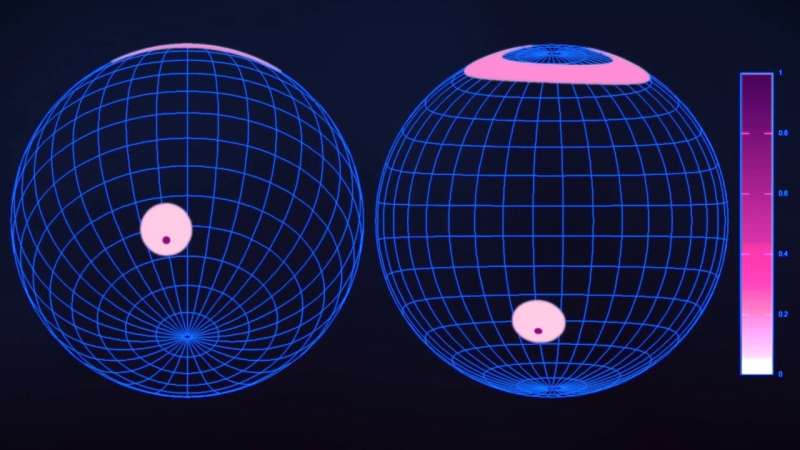The millisecond pulsar PSR J0437-4715, the closest to Earth, has a radius of only 11.4 km. At the same time, its mass is 40 percent greater than the Sun’s. Scientists have recently investigated the properties of this incredible object.

Millisecond pulsar PSR J0437-4715
A group of scientists from the University of Amsterdam recently studied the millisecond pulsar PSR J0437-4715. They used the NICER telescope, which is located on board the ISS and operates in the X-ray range.
PSR J0437-4715 is located at a distance of 510 light-years from us in the direction of the constellation of the Painter. It is a close pair of a white dwarf and a neutron star. Matter is flowing from the former to the latter, causing the core of the dead star to spin faster and faster.
Currently, its rotation speed is 175 times per second. This makes PSR J0437-4715 the closest millisecond pulsar to us. Scientists have devoted a number of papers to its study.
What the research has shown
In its work, the NICER telescope uses a technique called “pulse profile modeling”. It estimates the characteristics of flares from a neutron star that reach the Earth every 5.75 milliseconds. This data was then processed using the Dutch national supercomputer Snellius.
The scientists’ research points to a “softer equation of state”. This means that the maximum mass of neutron stars should be higher than previously thought. In the case of PSR J0437-4715, the researchers found that the radius of this object is only 11.4 km, while its mass is 1.4 solar masses.
The scientists also studied a number of other millisecond pulsars, such as PSR J0740+6620 and PSR J0030. They estimated their radii and masses with unprecedented accuracy. All this will help to better understand this class of objects.
Based on materials from phys.org

